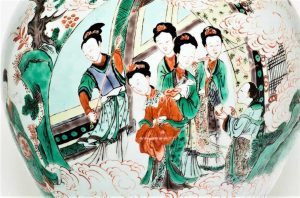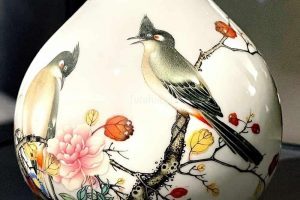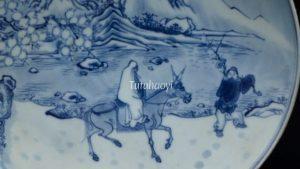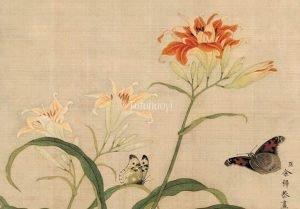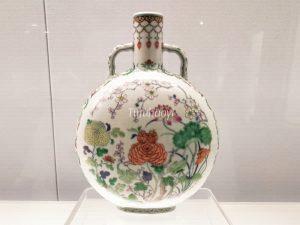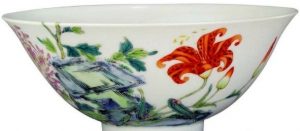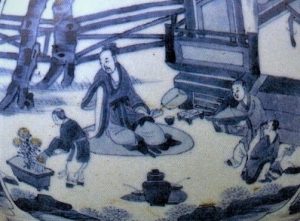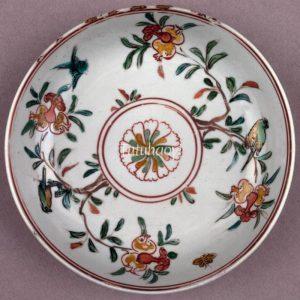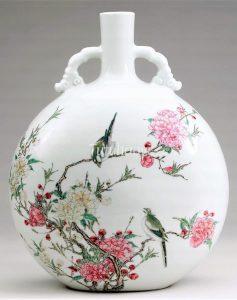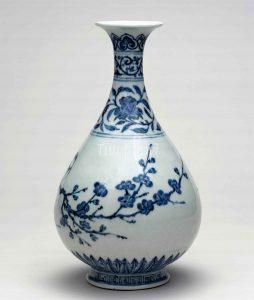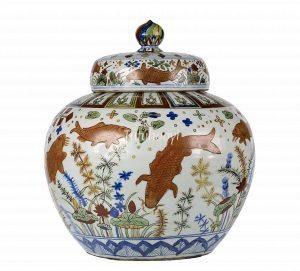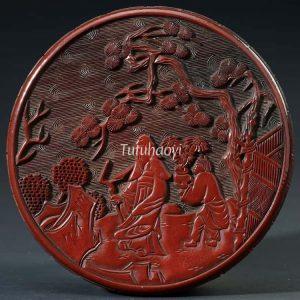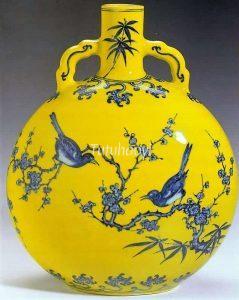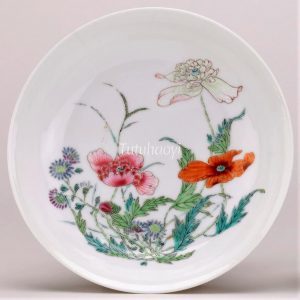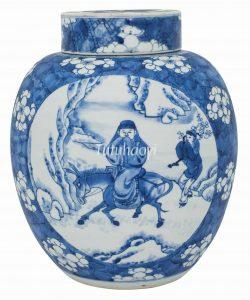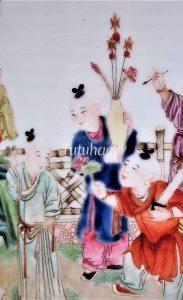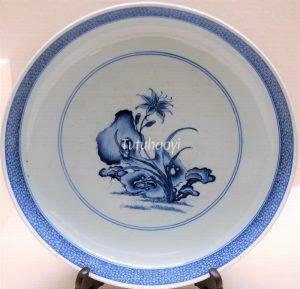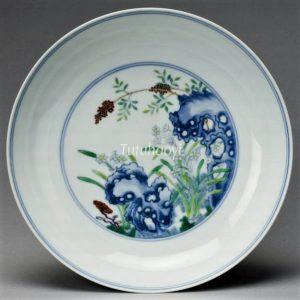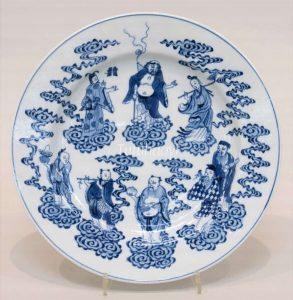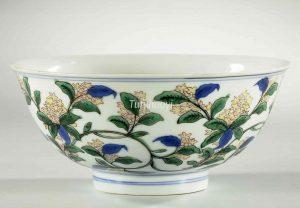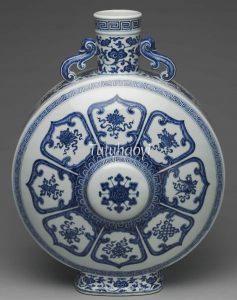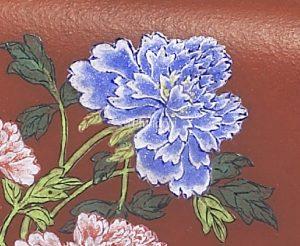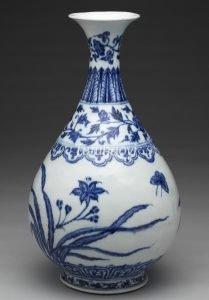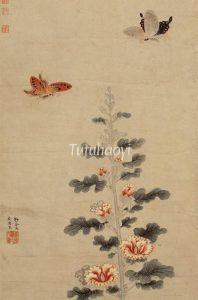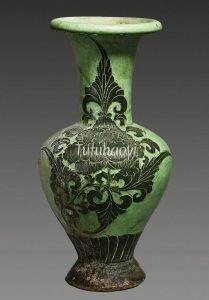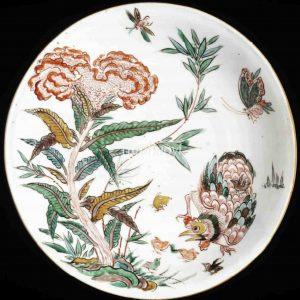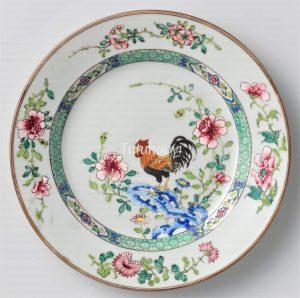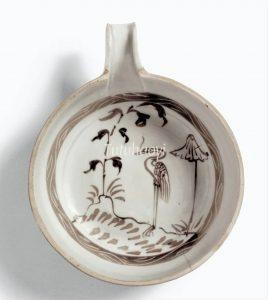Showing Results Containing
The ninth day of the ninth month is a special day in the Chinese lunisolar calendar. According to the Classic of Changes (易经 Yi Jing), ‘nine’ is a Yang number, and the ‘Double Ninth Day’ is considered auspicious and should be celebrated as a ‘Doub...
Have you ever wondered why the image of the prunus has been a popular motif in Chinese decorative art? Why do Chinese literati love to write poems about plum blossoms and paint them in their art works? Dr Yibin Ni will explain to you the symbolic ...
In Chinese culture, the Mid-Autumn Moon Festival is related to the legendary fairy Chang E, the Moon Goddess. We often see a hare, her loyal companion, and an osmanthus tree in the picture with her against a background of the Moon Palace. However,...
Appreciation of a top-tier porcelain garlic-head bottle vase painted with a pair of red-whiskered bulbuls in polychrome enamels over transparent glaze in the falangcai style and gilding displayed in the Petite Galerie of the Louvre in Paris.
A literati theme with the image of a scholar riding in a snowscape with branches of plum blossoms in the vicinity has been very popular in traditional Chinese visual culture and literature. But who is the scholar in the scene? Art historian Dr Yib...
Dr Yibin Ni has discussed the differences of symbolic meanings of lily between Western and Chinese cultures in his unique research, bringing new insight into pictorial art.
It is widely thought that the two-horned peony is a characteristic and unique feature only existed in Kangxi period. But Dr Yibin Ni has proved otherwise here with a number of examples from other reigns on Chinese antiques.
Is choosing a gift for your mother a difficult task? Not so much if your mother is a big fan of Chinese art. In traditional Chinese decorative arts, there are various images symbolising or referring motherhood. Lily flower is a typical exampleR...
Images of Tao Yuanming Appreciating Chrysanthemums, like many other traditional historical themes, are often mistaken as a mere ‘flowering-picking’ scene, or, worse, simply a ‘figure painting’. Let’s see an example.
Pun Design :
Pomegranate
Punning Details:
– Artist may repeat one particular visual element many times for conveying the numeral ‘bai 百 hundred’.
– A cracked pomegranate showing numerous seeds (bai zi<...
The tree commonly referred to in English as the flowering plum in fact belongs to the species Prunus mume, which is part of the apricot family.
With the pine and ba...
Fish (鱼 yu) puns with the word yu 余 meaning ‘abundance’, therefore it symbolises wealth and prosperity. Continue Reading
Tao Yuanming (陶渊明, 365–427), also known as Tao Qian 陶潜, the paragon of ‘Fields and Gardens poetry’, spent most of his life as a hermit in a cottage in the countryside, reading, drinking wine, and writing poetry in an unmannered style. He had a unique eye for the beauty and serenity of the natural world c...
The flower of the annual herbaceous species Papaver rhoeas has many different names in the West, such as common poppy, corn poppy, corn rose, field poppy, Flanders poppy, and red poppy. One of its names in China is yumeiren (虞美人), literally meaning ‘Yu the Beauty’. It was named after Yu Ji (虞姬), Consort...
Meng Haoran (孟浩然, c. 690–740) is one of the most renowned poets in Tang dynasty (618–906). He started off pursuing a civil service career and then abandoned it to concentrate on poetry. He was a major influence on other Tang and later poets because of his innovative focus on nature. There is a play attributed to the note...
A variation of 平升三级 ping sheng san ji (May you have three successive promotions unexpectedly) is 连升三级 lian shen...
How the daylily, whose Chinese name is ‘xuan 萱’, came to become a symbol for motherhood in Chinese culture is explained in the blog ‘
The Chinese deeply respect the elderly and consider a long existence – ideally accompanied by health and happiness – to be one of the five most important blessings (wufu 五福) in a person’s life, which were believed by the ancients and recorded in the Book of Documents 书经 in the Zhou Dynasty (...
The Chinese character ‘tian 天’ from the phrase ‘tianzhu 天竹’ for ‘nandina’ is both a homophone and homograph of the character ‘tian 天’ for ‘heaven’. The character ‘xian 仙’ in the phrase ‘shuixian 水仙’ for ‘narcissus’, is both a homophone and homograph of the character ‘xian<...
The character ‘yu 玉’ in ‘yulan hua 玉兰花’ for ‘magnolia’ is the same ‘yu 玉’ for ‘jade’. The word ‘tang 棠’ from ‘haitang hua 海棠花’ for ‘crabapple’ is homophonic with the word ‘tang 堂’ for ‘house’. The combination of the two characters ‘yutang 玉堂’ means ‘jade hous...
The Mid-Autumn Moon Festival falls on the night of full moon in the eighth lunar month. Chang’e, the Moon Goddess, is usually associated with this family-union occasion, together with the festival food – the moon cake (月饼). A legend recorded in an ancient Chinese book, The Huainanzi (淮南子 The Discourses of the Hu...
Pines, bamboos, and plum blossoms (prunus) form the ‘Three Friends in Winter’ (岁寒三友) motif. The early blossoming plum is the harbinger of spring; the
The motif of Yi Ba Lian 一把莲 is also called ‘yi shu lian’ (一束莲). It is presented as ‘a ribbon-tied bouquet of lotus in bud, full bloom, and seed pods acc...
Lian Hua (lotus) is also called ‘he hua (荷花)’. It is different from ‘shui lian (睡莲 water lily)’ which is another kind of water plant.
The osmanthus tree prominent in the Moon Palace came to be a symbol for elite talents in the Jin dynasty 晋朝 (265-420). In around Tang dynasty (618-907), ‘plucking a s...
Osmanthus blossoms in autumn and is conventionally regarded as the flower of the eighth month of the Chinese lunisolar calendar. Its sweet scent is discreet, distinctive, and unforgettable, and has a legendary position in Chinese poetry and art. It is associated with the moon because ancient Chinese wanted to explain the...
The ‘Baoxiang 宝相’ pattern is a Buddhist motif created through artistic processing based on the shapes of flowers, flower buds, and leaves found in nature. The main subjects of the Baoxiang pattern are Continue Reading
The Eight Auspicious Emblems, also known as ‘ba bao’ (八宝, Eight Treasures), or ‘ba rui xiang’ (八瑞相, Eight Symbols of Good Fortune), are a set of symbols in traditional Tibetan Buddhism. These symbols are often depicted together, bringing positive energy, Continue Reading
Common sources such as Baidu refer to the motif of a peony flower head with two distinctive ‘horns’ as a characteristic feature unique to Chinese porcelain of the Kangxi ...
Lily flowers and butterflies form a pun rebus picture known as ‘Xuān Dié Tú 萱耋图’, meaning ‘May mother live up to a ripe old age’. ‘Xuan 萱’ in the picture...
‘Xuan 萱’ comes from ‘xuan cao 萱草’, the Chinese name for ‘lily’. In traditional Chinese decorative arts, lily flowers symbolise motherhood and maternal bonds with children, and they figure prominently on articles created for mothers, expecting or being a birthday girl.
Related Pun Picture:...
The primary symbolic meaning of the hollyhock (shu kui 蜀葵) is the good wish for longevity. The secondary implication is based on the perennially sun-facing nature of the hollyhock. In the old days, people compared their emperor or statesman to the sun and themselves to the hollyhock, implying that they would alw...
Book is a symbol of education or examinations.
Peony is a symbol of wealth and prestige.
The motif combination of book and peony sends a ...
The peony is traditionally considered the most prestigious flower in China. It is symbolic for power, royalty, wealth, and high rank. The ancient town Luoyang 洛阳 was famous for rare and beautiful varieties of peonies. The nickname of peony in Chinese is called ‘fu gui hua 富贵花’, literally meaning the flower of we...
‘Guan 冠’ in the Chinese name ‘ji guan hua 鸡冠花’ for ‘cockscomb’ is a pun on ‘guan 官’, which means ‘high-ranking official’. The crest on the head of a rooster is also called ‘guan 冠’ in Chinese. Thus, the appearance of both the cockscomb and rooster in a picture represents the auspicious...
The Chinese phrase ‘Gong ming 功名’ for ‘scholarly honour or official rank’ is a pun on two Chinese characters ‘gong 公’ and ‘ming 鸣’.
‘Gong 公’ from ‘gong ji 公鸡’, the Chinese name for ‘rooster’, makes pun on the Chinese word ‘gong 功’; and ‘ming 鸣’, which ...
An egret and lotus flowers (莲花) are pictured in combination to infer ‘Yi Lu Qing Lian’, which means ‘You are an honest and uncorrupted official in your ...
Lotus flower is one of the most commonly seen motifs in Chinese traditional artworks. It is particularly favoured by scholars because one of its biological characteristics is that it grows out of mud yet blooms pure and untainted flowers, which scholars refer to their own uncorrupted nature.
Lotus in Chinese can b...


